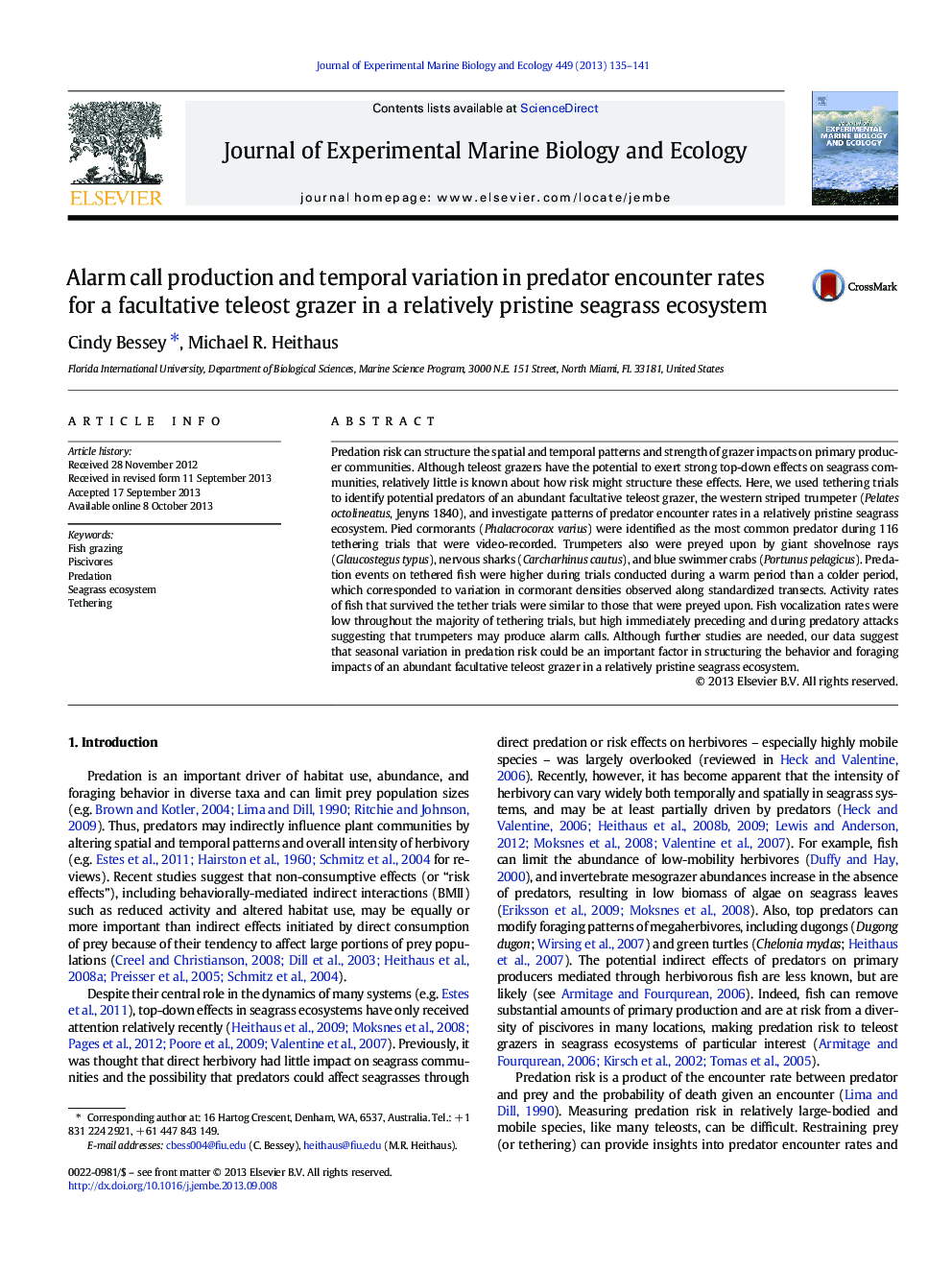| Article ID | Journal | Published Year | Pages | File Type |
|---|---|---|---|---|
| 6304272 | Journal of Experimental Marine Biology and Ecology | 2013 | 7 Pages |
Abstract
Predation risk can structure the spatial and temporal patterns and strength of grazer impacts on primary producer communities. Although teleost grazers have the potential to exert strong top-down effects on seagrass communities, relatively little is known about how risk might structure these effects. Here, we used tethering trials to identify potential predators of an abundant facultative teleost grazer, the western striped trumpeter (Pelates octolineatus, Jenyns 1840), and investigate patterns of predator encounter rates in a relatively pristine seagrass ecosystem. Pied cormorants (Phalacrocorax varius) were identified as the most common predator during 116 tethering trials that were video-recorded. Trumpeters also were preyed upon by giant shovelnose rays (Glaucostegus typus), nervous sharks (Carcharhinus cautus), and blue swimmer crabs (Portunus pelagicus). Predation events on tethered fish were higher during trials conducted during a warm period than a colder period, which corresponded to variation in cormorant densities observed along standardized transects. Activity rates of fish that survived the tether trials were similar to those that were preyed upon. Fish vocalization rates were low throughout the majority of tethering trials, but high immediately preceding and during predatory attacks suggesting that trumpeters may produce alarm calls. Although further studies are needed, our data suggest that seasonal variation in predation risk could be an important factor in structuring the behavior and foraging impacts of an abundant facultative teleost grazer in a relatively pristine seagrass ecosystem.
Keywords
Related Topics
Life Sciences
Agricultural and Biological Sciences
Aquatic Science
Authors
Cindy Bessey, Michael R. Heithaus,
